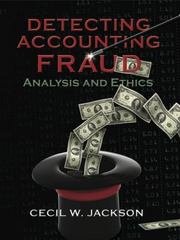Instructions: Complete the questions below. Show your work to each question in the corresponding tabs in this Excel workbook. Part 1. Applying payback period, accounting rate of return, and net present value (25 points) Brown Co. can invest in one of two alternative projects. Project A requires a $240,000 initial investment for new machinery with a four-year life and no salvage value. Project B requires a $240,000 initial investment for new machinery with a three-year life and no salvage value. The two projects yield the following predicted annual results. The company uses straight-line depreciation, and cash flows occur evenly throughout each year. Annual Amounts Project A Project B Sales $250,000 $200,000 Expenses Direct materials $ 35,000 $ 25,000 Direct materials 50,000 30,000 Overhead including depreciation 90,000 90,000 Selling, general, and administrative expenses 18,000 18,000 Total expenses 193,000 163,000 Pretax income 57,000 37,000 Income taxes (30%) 17,100 11,100 Income . . .............." ....... $ 39,900 $ 25,90015 19 i0 i1 i2 i3 i4 i5 i6 i7 i8 59 i0 l1 l2 Required 1 Compute each project's annual net cash ows. (Round net cash ows to the nearest dollar) 2:. Compute each project's payback period. (Round the payback period to two decimals.) 2b. If the company bases investment decisions solely on payback period, which project will it choose and why? 3:. Compute each project's accounting rate of return. (Round the percentage return to one decimal place). 3b. If the company bases investment decisions solely on accounting rate of return, which project will it choose and why? 4a. Compute each project's net present value using 8% as the discount rate. For part 4 only, assume that cash ows occur at each year-end. (Round net present values to the nearest dollar). 4b. If the company bases investment decisions solely on net present value, which project will it choose and why? 5 Identify the project you would recommend to management; explain your choice. 5 Part 2: Comparative Analysis (15 points) Information on assumed capital investments in the current year for Google and Apple follow: 8 $ billions Google Apple Initial investment .......... $(2.42) $(2.12) Required internal rate of return on investmer 15% 10% Useful Life 7 years 10 years Annual Cash Flows ? ? 5 6 Required 1 Using the information provided, calculate the amount of annual cash flows that Google and Apple must earn from these projects to achieve their respective internal rate of return. 8 2 Locate and access Google's and Apple's financial statements for the fiscal year ended 2017 (also known as, annual reports or Form10-K). Refer to Google's 2017 financial statements and identify the actual amount that Google invested in capital assets for the year 2017. Refer to Apple's 2017 financial statements and identify the actual amount that Apple invested in capital assets for the year 2017. a. Which company invested more in capital assets in 2017. W 4 Hint: The SEC maintains the EDGAR (Electronic Data Gathering, Analysis, and Retrieval) database at SEC.gov for U.S. filers. The Form 10-K is the annaul report form for most companies. 15 You may access the annual reports directly from the company's website as well (usually under Investor relations) 6









